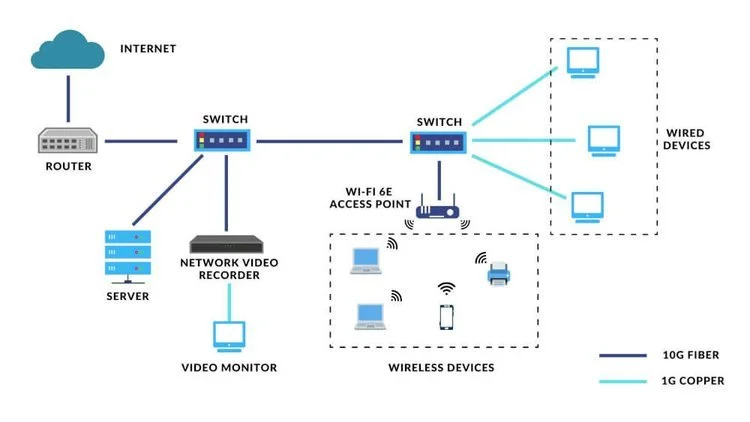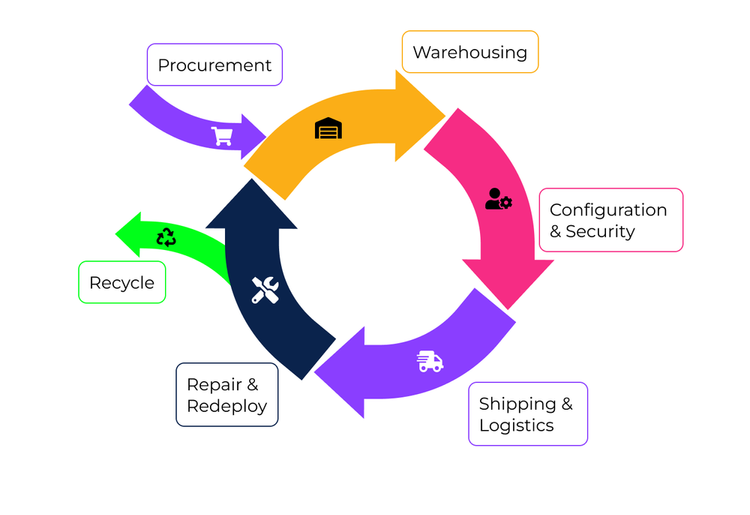How To Scale IT After Getting Series A Funding For Your Startup
Let’s set up the scenario first…
The capital you raised in the Seed Stage is running low. Thankfully, you are among the few startups that actually make it to the next round of fundraising. And you are going to do it emphatically!
Here’s what a typical Series A startup looks like…
You have a business model that is certain to generate long-term profit. You have a working product and are inching closer to a product-market fit. You already have a few happy customers and initial revenue. And to top it all off, your ongoing beta trial has been a thumping success.
However, there is still work to be done to validate and scale the business. And for this, you need to hire people, ramp up your infrastructure, and move out of your apartment and into an office. All of this costs big money, so you are prepping to raise serious capital.
In 2022, the median Series A deal size was $14 million. Let’s assume that you secure exactly that amount. Hurray! Congrats on a successful Series A. That seems like a lot of money. But is it?
What do you do now?
Typically, after raising Series A rounds, one of the first things startups do is hire for critical roles, especially in engineering, followed by investing in IT infrastructure. And finally, build or grow their go-to-market team, i.e. sales, marketing, and operations. Depending on the industry, you may also need to invest in risk and compliance, data governance, etc.
The Series A funding is expected to last 12 to 18 months. The average headcount for Series A varies between 20 and 100. Let’s say, you are towards the lower end of the spectrum with 40 employees. As you may have guessed, although the salaries at startups may be slightly lower than at big tech companies, they will still take up the biggest portion of the capital you have raised.
So, you need to be judicious about allocating resources. Ideally, you’d want to focus entirely on the development and enhancement of your core product or service. But that requires not just hiring the right people but also supporting them with the right technology stack and robust infrastructure.
Here’s our recommendation to help you do just that… build a tech stack and infrastructure that is efficient and scalable…
Solving The Big Problems Vs Solving The Small Ones
You hire the best and brightest engineers, programmers, and developers to solve the most critical problems and enhance your product or service. To meet the planned release dates and feature updates, each member of your development team needs to dedicate most if not all of their time to these tasks. And, that’s exactly what they are doing. But wait, are they?
Very often, especially in smaller startups, there is no dedicated IT support technician. More often than not, one of the engineers or programmers ends up having to troubleshoot and fix IT issues for the whole company. You’d agree that it’s not the best use of their time.
In addition, such dilution of roles and jumbling of responsibilities leads to job dissatisfaction and retention issues. It’s no surprise that many startups come to us to manage their IT after their second or third engineer/IT person resigns.
In-House Vs. Outsourced IT Support
Of course, you have the option to hire a full-time IT support specialist, who should be able to handle your day-to-day support needs. But as you are looking to build a team and ramp up your infrastructure, that one person is not going to be enough. You will need a wide range of expertise in networking, security, compliance, cloud, video conferencing gears, and applications. All of this, frankly, is impossible for one person to handle.
Your best and most cost-effective bet is to partner with a managed IT services provider like Jones IT, which possesses all the various IT skills you need right from day one. In addition, outsourcing your IT needs to a managed service provider means that IT support will always be available; they will never be on vacation or out sick. With Jones IT, you also have the advantage of being able to easily scale up or down your IT needs as and when required.
What about the costs?
The average monthly base salary of an entry-level IT technician in San Francisco is $4,245. Add to it the cost of benefits at 38.4%, recruiting costs of $4,425, training and onboarding costs of $1,075, device cost of $1,500, the monthly cost of software and SaaS of $240, and finally, average annual increment of 4%, you are looking at $142,352 over 18 months.
But, that’s for an entry-level IT technician with little to no experience, which means they will require plenty of time for training as well as close supervision. There are luxuries that startups can rarely afford to offer.
In any case, surely, if you are to trust someone to handle the weight of your entire IT infrastructure, you’d want them to have a bit of experience. In that case, you’ll have to spend $185,998 over 18 months.
On the other hand, if you were to partner with Jones IT, you’d likely spend only $126,180 over the same 18-month period. That’s a saving of $ 58,971. In addition to the lower cost, you’d get access to not just IT support technicians but also network engineers, systems engineers, and IT project managers without having to spend extra.
This precious $ 58,971 you just saved, can be dedicated to upgrading your network, servers, or cloud infrastructure.
Network - The Backbone Of Your IT Infrastructure
Like most modern businesses, your startup will certainly be predominantly digital. This means that all your devices, software, applications, and most if not all of your work are either supported by or built upon your computer network. Additionally, your business operations most likely will be heavily reliant on cloud-based applications and services.
So your startup will need a robust network infrastructure that can support your current needs as well as serve you well into your Series B/C rounds. You will need network equipment to not only be able to effectively handle network traffic as you scale but also to have advanced network security features and services. Additionally, it should be easy to manage because you don’t want to hire a network engineer just yet.
We recommend getting the Meraki network stack. In our over two decades of experience, the network performance, security capabilities, and ease of management offered by Meraki has been unmatched. Although it may seem a little pricey investment upfront, in the long run, it will be worth every penny and more.
Productivity Suite
The choice of productivity suite comes down to Microsoft 365 (formerly Office 365) or Google Workspace (formerly G Suite). Unless you have any specific business requirement that dictates the choice, Google Workspace is your best bet. There isn’t much separating the two based on cloud storage, sharing, collaboration capabilities, and application costs.
But when it comes to deployment and management, Microsoft 365 is a lot costlier. The day-to-day support and troubleshooting for Microsoft 365 is much more labor-intensive, which translates to higher IT support costs. So from an operations and cost perspective, Google Workspace is more suitable for startups.
Device - Mac Vs. PC
When discussing devices, we are again faced with the age-old battle between PC and Mac.
The operating system of MacBooks, i.e. macOS is a highly stable and user-friendly operating system. MacBooks also come with a number of built-in applications that are designed to work well with all your other Apple devices. As a result, Macbook users require much less support. This means fewer disruptions, higher productivity, and lower IT support costs. Therefore, we recommend startups to go with MacBook Pros.
Device Management
With the rise of remote and hybrid work environments, device tracking and management have become one of the most daunting challenges for startups. Every time someone joins or leaves the company, it sets in motion a chain of activities involving HR, IT, purchasing, administration, and shipping and logistics. For a growing startup with limited resources, effectively managing all of these activities is very stressful, to say the least.
Thankfully, there are IT Asset Tracking And Management (ITAM) solutions that take the hassles of device management off your plate. We recommend using Bonboard, which provides not only end-to-end device lifecycle management but also makes remote onboarding and offboarding seamless.
And if you pair a service like Bonboard with a mobile device management solution (MDM) like Kandji, you can easily integrate device security with device management. Kandji makes it incredibly easy to deploy hardened devices, update software, resolve vulnerabilities, and prevent problems across your entire fleet of devices.
To complete the device management stack we also recommend using an Identity and Access Management solution like Okta. It helps you automate actions on devices, build conditional logic for device configuration, and create a more secure login for your users. Using Okta you can enhance device and account security since it helps prevent misconfigurations, missing applications, or incorrect access privileges during device deployment.
Communication
More startups use Slack for communication than any other tool. You can’t really go wrong if you opt for the most loved and widely used messaging application. We use Slack at Jones IT and most if not all of our communication happens on it.
Slack allows you to organize your communication into channels, ensuring that only those who need to see the message are notified. It also has handy features that allow you to set reminders, schedule messages, pause notifications, and set your availability so that your team is aware and set expectations accordingly.
Slack also integrates with all the other applications that you are likely to use at the company. This gives your teams the ability to communicate and collaborate without having to hop from one application to another. Thus it helps reduce disruptions and improves productivity.
From an IT support perspective, Slack is easy to deploy and manage and there are hardly ever any usage issues.
Conclusion
In summary, after securing Series A funding, startups need to make many critical technology decisions. Where and how they allocate their limited resources has a big impact on their productivity, scalability, and short-term sustainability.
The technology recommendations that we have shared above come from over two decades of working with startups including some well-known companies in San Francisco like AngelList, Figma, Superhuman, Hotel Tonight, Turo, and Intercom to name a few.
Does your startup need help with its IT infrastructure? Click the button below to reach out and learn how Jones IT can help you make the most of your investment in technology.
















